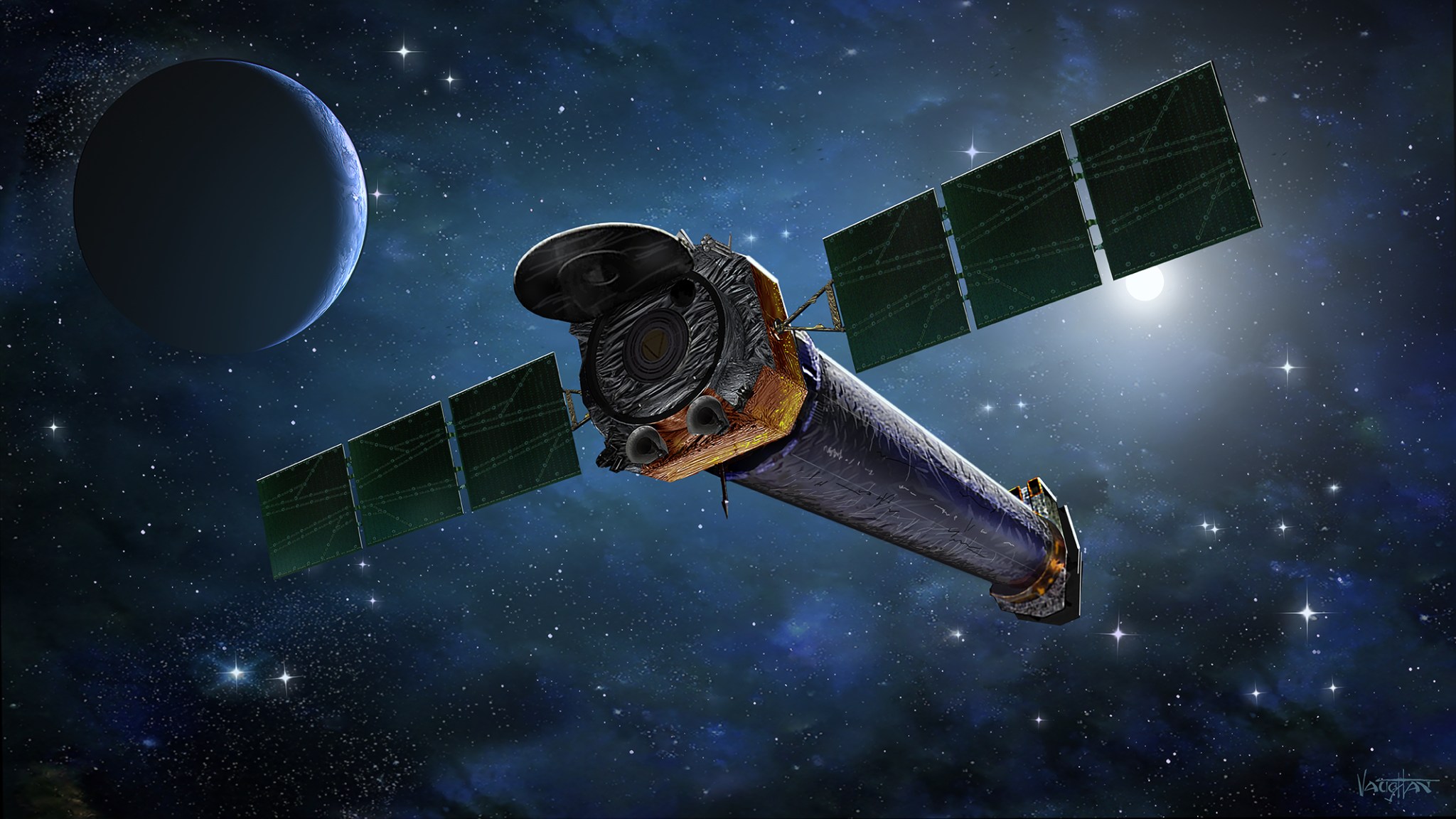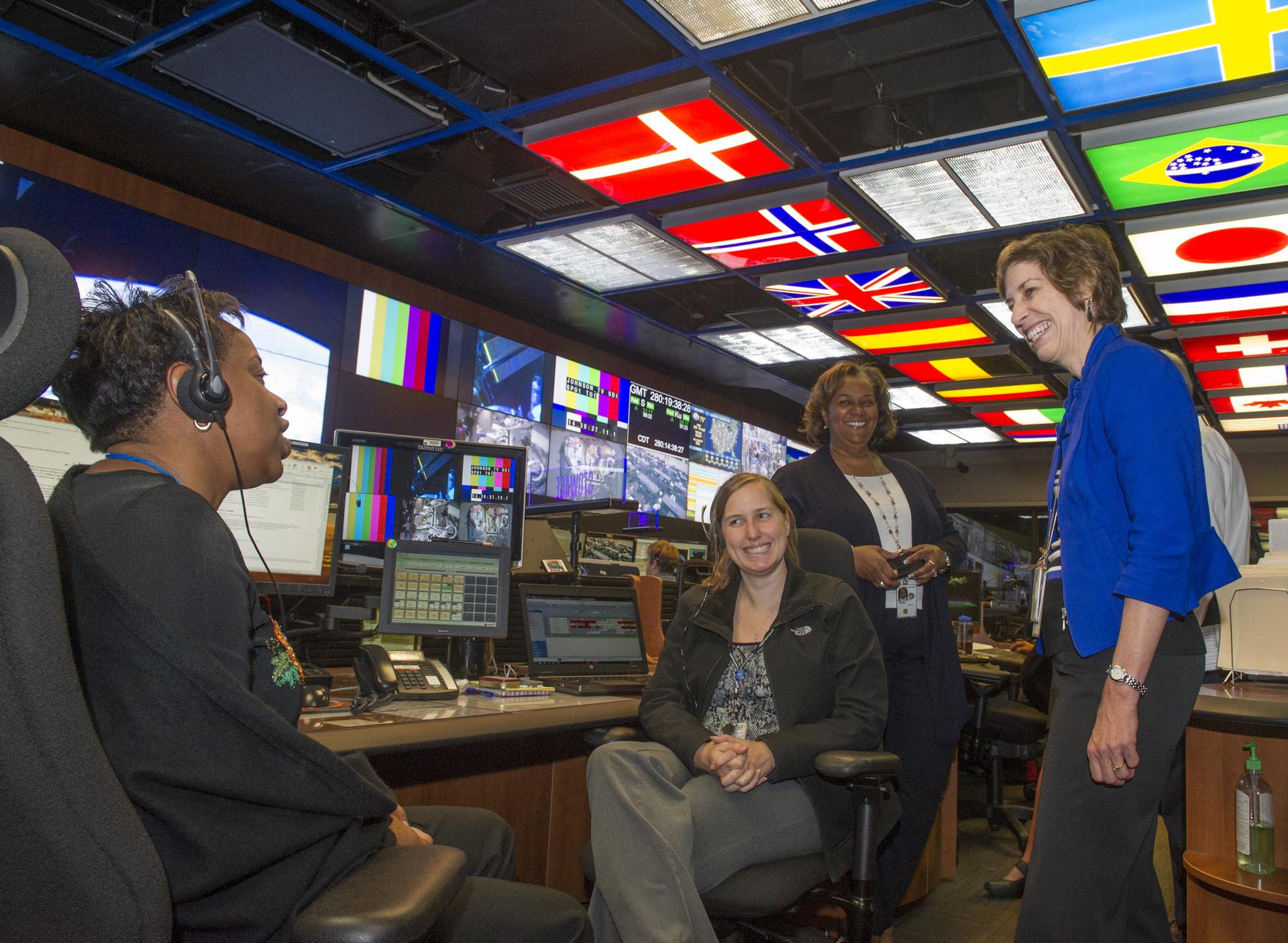In This Week’s Star
- Marshall Celebrates 20 Years of Managing Chandra X-ray Observatory
- Chandra 20th Anniversary Panel Set For Sept. 5 at U.S. Space & Rocket Center
- SLS Engine Section Completed for Artemis I
- Center Operations Customer Survey Helps Ensure Mission Success
- Former Johnson Center Director Ellen Ochoa to Speak at Marshall Sept. 5
- NASA Issues New Guidelines for 2019-2020 Human Exploration Rover Challenge
- This Week in NASA History: Michoud Selected as Production Site for Saturn Rockets – Sept. 7, 1961
Marshall Celebrates 20 Years of Managing Chandra X-ray Observatory
By Taylor Goodwin
Twenty years ago, on July 23, 1999, NASA’s Chandra X-ray Observatory launched aboard the space shuttle Columbia. Since its original deployment into orbit, Chandra has quadrupled its original five-year mission, revolutionizing our understanding of the universe each step of the way.
“Designed for three years with a goal of five, we’re now celebrating our 20th year of Chandra,” said Martin Weisskopf, Chandra project scientist at NASA’s Marshall Space Flight Center. “Scientifically, Chandra is as productive now as it was at launch.”
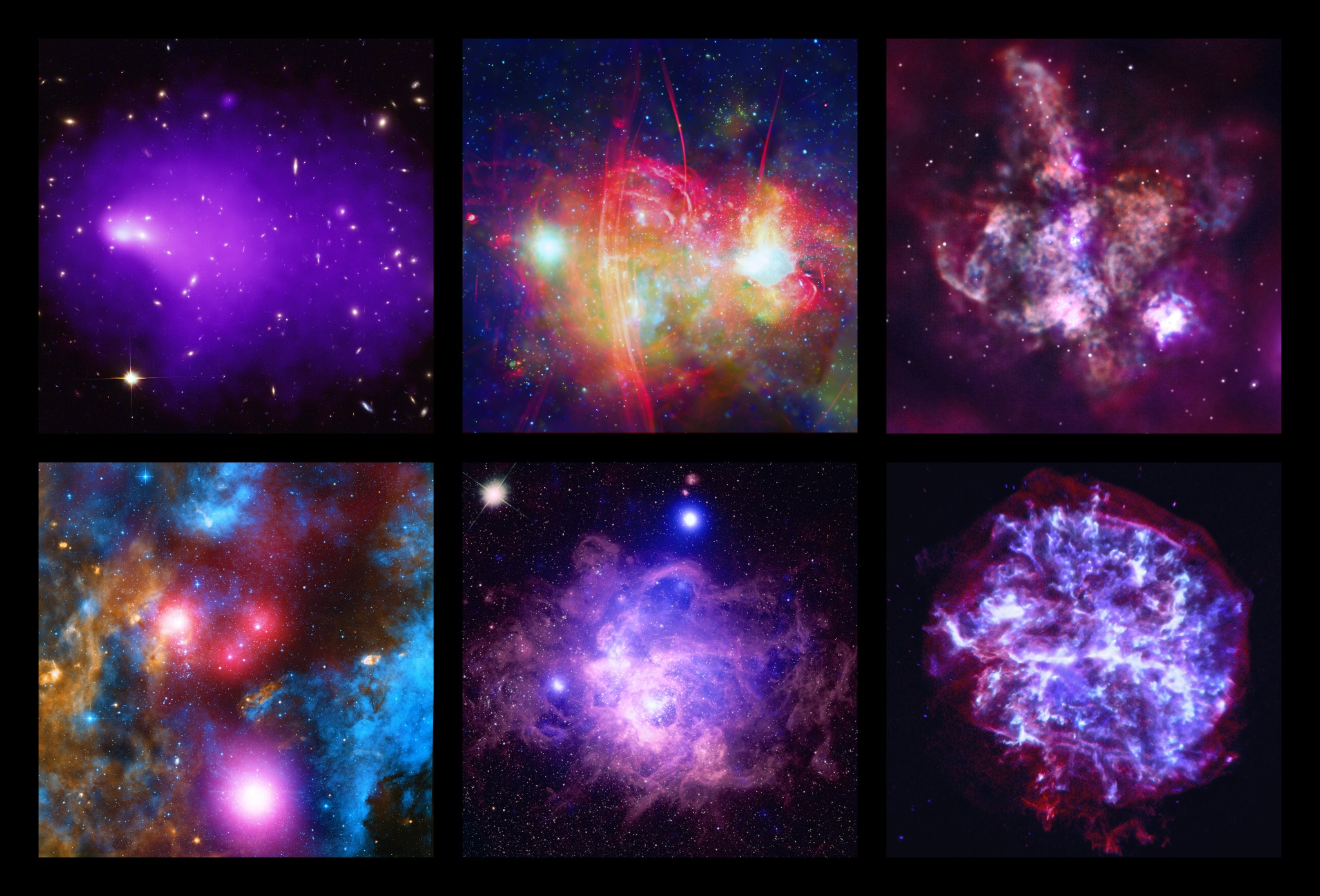
As part of NASA’s Great Observatories program, Chandra, which is managed by Marshall, was designed and built to observe X-rays alongside the Hubble Space Telescope in ultraviolet, visible and near infrared light, the Spitzer Space Telescope in infrared light and the Compton Gamma Ray Observatory in gamma rays.
In his “Project Scientist’s Report” — part of the “20 Years of Chandra” edition of Chandra News — Weisskopf wrote, “As we look backwards, I feel fortunate that I, and the Project Science Team at Marshall Space Flight Center, have been able to contribute to the success of Chandra. The entire community should take pride in its amazing accomplishments under MSFC’s leadership.” In the article, he explained that Chandra is one of the most successful astrophysics missions ever flown, according to metrics of cost, schedule, performance and scientific output.
Originally named the Advanced X-ray Astrophysics Facility, the initial study and design of Chandra was proposed to NASA in 1976 by Harvey Tananbaum and Riccardo Giacconi. However, prior to its launch 23 years later, the observatory was renamed in honor of the late Indian-American Nobel laureate, Subrahmanyan Chandreasekhar. Widely known as Chandra, meaning “moon” or “luminous” in Sanskrit, he was regarded as one of the most iconic astrophysicists of the 20th century.
Part of a rich legacy of telescopes, Chandra’s X-ray lineage stretches back to the Space Age when scientists and engineers constructed instruments to be sent above the Earth’s atmosphere. With astronomers enabled to observe cosmic object’s X-rays for the first time, years of innovations and capabilities followed. Chandra’s strong astronomical family ties stretch far across the electromagnetic spectrum.
When the observatory opened its sunshade doors for the first time on Aug. 12, 1999, celestial X-ray light successfully reached Chandra’s mirrors. This small initial step paved the way for the next two decades of discovery in the midst of the violent, mysterious universe and the phenomenal objects therein.
To commemorate Chandra’s 20th anniversary, NASA released new images representing the breadth of Chandra’s exploration, demonstrating the variety of objects it studies as well as how X-rays complement the data collected in other types of light. These six new images (Abell 2146, Sagittarius A, 30 Doradus, Cygnus OB2, NGC 604 and G292) are merely a sample of Chandra’s spectacular X-ray vision.
In 2018, NASA awarded a contract extension to continue operation and science support of Chandra through 2024, with the possibility of two, three-year options.
Today’s quest to study the universe is both multiwavelength and multimessenger in nature, with many of the major discoveries requiring information from different types of light as well as gravitational waves and particle physics. In its 20 years of operation, Chandra and X-ray astronomy as a whole have played a vital part in uncovering and unraveling the mysteries of the universe.
The Smithsonian Astrophysical Observatory’s Chandra X-ray Center controls science and flight operations from Cambridge, Massachusetts.
Goodwin, an ASRC Federal/Analytical Services employee, supports the Office of Strategic Analysis & Communications.
Chandra 20th Anniversary Panel Set For Sept. 5 at U.S. Space & Rocket Center
To celebrate Chandra’s 20th anniversary, a panel, “20 Years of Science with NASA’s Chandra X-Ray Observatory,” will be held from 6:30 to 8 p.m. on Sept. 5 at the U.S. Space & Rocket Center’s Intuitive Planetarium. Panel members will include retired NASA astronaut Eileen Collins; Chandra X-ray Center astrophysicist Aneta Siemiginowska; Chandra X-ray Center senior astrophysicist Harvey Tananbaum; Marshall’s Chandra project scientist Martin Weisskopf; and Chandra X-ray Center visualization lead Kim Kowal Arcand, who will serve as moderator.
Admission is free and open to the public. Seating is limited. To reserve a ticket, register here. For more information, contact Molly Porter at molly.a.porter@nasa.gov.
For more information about Chandra’s 20th anniversary, visit:
http://chandra.harvard.edu/20th.
SLS Engine Section Completed for Artemis I
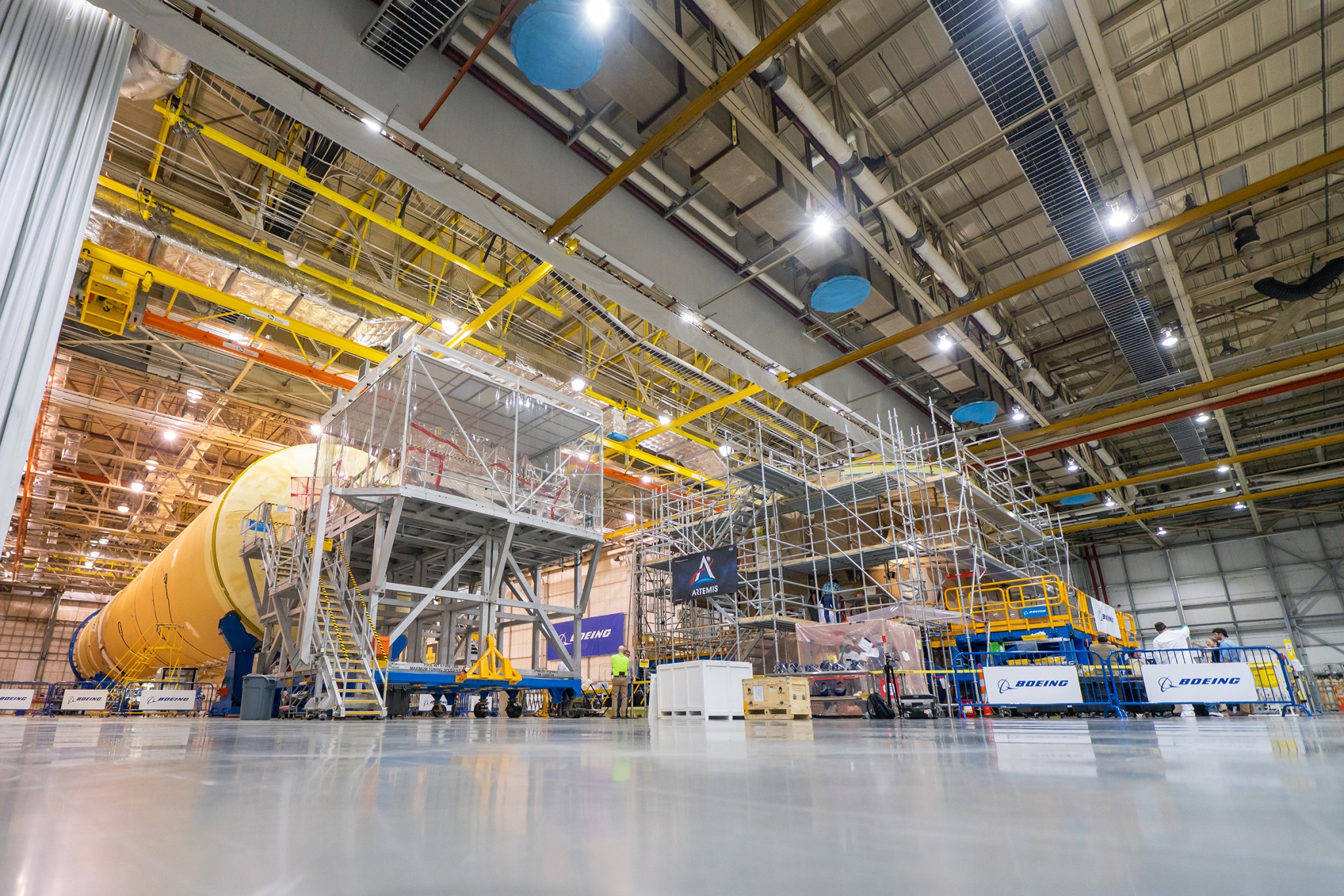
NASA and Boeing technicians at NASA’s Michoud Assembly Facility completed assembly and functional testing on the engine section, the lowest portion of the massive core stage for NASA’s Space Launch System, on Aug. 29. The engine section, at right beside the rest of the assembled stage for Artemis I, was covered with scaffolding used for assembly and checkout. Technicians removed the scaffolding and moved the engine section to another part of the facility to prepare it for integration with the rest of the core stage. Once the engine section is joined to the rest of the core stage, the main structure will be complete. The Michoud team will begin the complicated task of connecting the four RS-25 engines to the main propulsion systems inside the engine section during September. (NASA)
Center Operations Customer Survey Helps Ensure Mission Success
By Rick Smith
As the Office of Center Operations at NASA’s Marshall Space Flight Center rolls out its biennial customer satisfaction survey, office leaders hope a record number of team members will contribute, helping to shape Marshall’s success in achieving the agency’s current and future mission goals.
Center Operations provides products and services related to facilities, logistics, security, export control, environmental engineering and occupational health, all of which directly support and enable the missions of every Marshall organization.
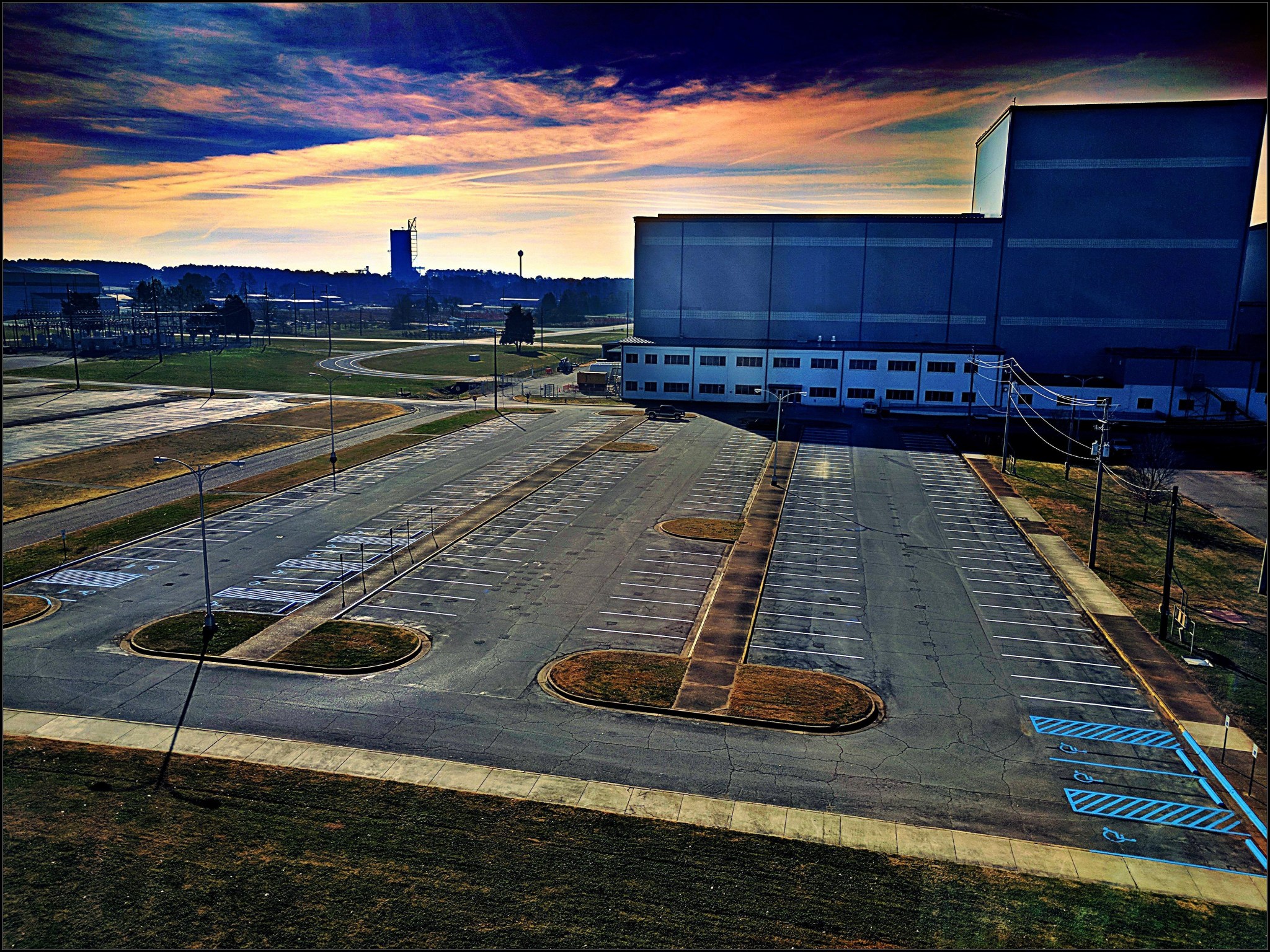
“Mission success is customer satisfaction for us,” office director Roy Malone said. “When we have to make decisions to maximize limited resources though, we always prioritize mission-essential support capabilities.”
More than 900 team members — roughly one in six Marshall workers — answered the organization’s last survey in 2017, offering suggestions to improve everything from badging and reporting facilities issues to landscaping and medical services.
For this year’s survey, the office received 334 responses in the first 48 hours after its rollout. Stephen Burke, who oversees the survey for the organization, anticipates receiving as many as 1,500 responses.
That feedback is critical to help prioritize the organization’s time and resources, focusing on the most immediate needs and those critical to NASA’s mission, he said. That may include demolition of old buildings, construction of new facilities, procuring state-of-the-art transport for flight hardware on behalf of authorized personnel, or implementing new approaches to safeguard Marshall’s most important assets: its people.
“We want to ensure our budget dollars stretch as far as possible, to satisfy as many customers as we can,” Burke said. “To that end, we’ve made the survey more sophisticated this time, a little more far-reaching in terms of assessing long-term Center Operations goals and soliciting customer ideas about how to address future needs.”
The survey, which takes 5-10 minutes to complete, is available here through Sept. 20. Once results have been tallied, they will be posted to ExplorNet.
Malone said the organization has seen significant boosts in customer satisfaction since implementing changes in response to the 2017 survey. The office launched its 4-HELP ExplorNet page and a facilities customer service number — 256-961-3000 — to help employees pursue assistance with facilities-related questions or issues.
Center Operations also added Tammy Knight to the new position of facilities customer support lead. Since November 2018, Knight has served as the primary point of contact for the office, maintaining close communications with Marshall building managers, supporting Burke with the survey and handling incoming customer issues. “I’m available to all team members to help assess, mediate and resolve ongoing Center Operations issues,” she said.
Numerous center improvement initiatives can be traced to customer satisfaction survey feedback, including improvements to buildings 4610, 4478 and 4220. Center Operations currently is planning an ambitious lighting system overhaul in Building 4203, contracting with a third-party vendor to update the facility’s smart technology to better conserve electricity.
Marshall continues to partner with the U.S. Army Garrison, the FBI, the Tennessee Valley Authority and other business partners to transform Redstone Arsenal into a true “smart city” — a productive, cost-conscious, environmentally friendly business and technology hub offering new partnership opportunities to government and industry across Alabama and the nation.
Those opportunities, Malone said, depend on input from the entire Marshall team.
“We take customer feedback extremely seriously,” he said. “No one knows better than the Marshall family where our needs are greatest, and no one is better positioned to help us navigate a successful path forward.”
Smith, an ASRC Federal/Analytical Services employee, supports the Office of Strategic Analysis & Communications.
Former Johnson Center Director Ellen Ochoa to Speak at Marshall Sept. 5
Ellen Ochoa, a former astronaut and former director of NASA’s Johnson Space Center, will deliver the “Mission Success is in Our Hands” lecture Sept. 5 at 11:30 a.m. in Room P110 of Building 4200 at NASA’s Marshall Space Flight Center.
Ochoa will recount her experiences as an astronaut, director of Flight Crew Operations at Johnson and as Johnson’s director.
She also will share lessons learned from her career, from NASA’s Return to Flight following the loss of space shuttle Columbia through Soyuz missions and preparations for commercial crew flights.
NASA Issues New Guidelines for 2019-2020 Human Exploration Rover Challenge
By Rick Smith
NASA’s Human Exploration Rover Challenge — the space agency’s annual human-piloted rover design competition for high school, college and university teams — has issued its updated guidebook for the 2019-20 challenge.
The popular engineering challenge will culminate in two days of student competition at the U.S. Space & Rocket Center in Huntsville on April 17-18, 2020.
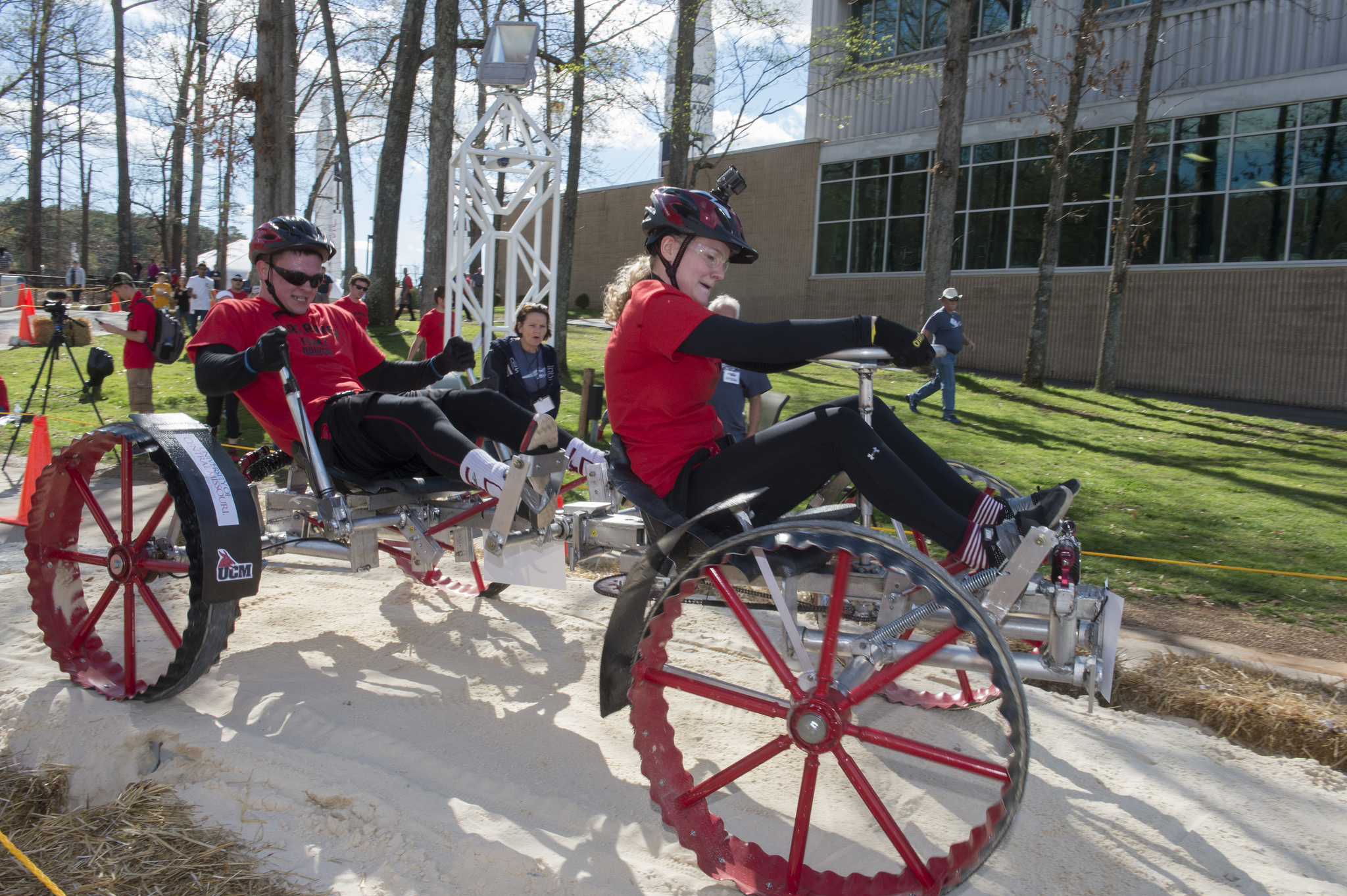
The contest, which is expected to draw up to 100 student teams from around the world, reflects the goals of NASA’s Artemis Program, which seeks to put the first woman and next man on the Moon by 2024. One female and one male driver will pilot each team’s lightweight rover across a demanding half-mile course dotted with obstacles and scientific challenges. NASA hopes the experience will motivate participants — and their classmates back home — to pursue careers beneficial to the nation’s science and exploration goals in space.
“As NASA readies Artemis to extend a permanent human presence beyond Earth, the NASA Rover Challenge exemplifies our commitment to inspire and engage new generations to carry on the legacy of imagination, dedication and daring that has made America a leader in space for six decades,” said Julie Clift, an education program specialist at NASA’s Marshall Space Flight Center, which manages the Rover Challenge for the agency.
Event organizers in Marshall’s STEM Engagement Office — which works to augment science, technology, engineering and math curricula in American schools and helps mold future leaders in the U.S. aerospace workforce — encourage interested teams to review the new guidebook, now available online.
“The event once revolved almost completely around high-speed, timed completion of the course,” Clift said, “but its primary mission now is to challenge teams to think like NASA mission planners and planetary explorers.” The organizing committee refines the competition each year to further enhance this element, she said, and this year brings some significant new rule changes for 2019-2020:
- Teams must finish the course in eight minutes or less. The rule adds a minute to last year’s clock, giving teams a greater opportunity to tackle more of the course’s optional 14 obstacles and five unique science tasks, earning points and potentially winning awards provided by NASA and its partners.
- Teams design and build their own rovers, but NASA will no longer accept pneumatic tires or other commercially purchased wheels on any competing vehicle. Each team must design and fabricate their wheels, with the exception of the central hubs, ensuring they are sturdy enough to withstand the punishing, uneven surfaces on the course.
- A new preliminary quiz on the contents of the guidebook, including course and vehicle design rules, must be successfully completed by each team for acceptance into the competition.
Registration for the next Rover Challenge will open Oct. 10 for all teams. Registration will close Dec. 12 for international teams and Jan. 16, 2020, for U.S. teams. For more information, interested student advisors or team leads can contact NASA at: MSFC-RoverChallenge@mail.nasa.gov
Smith, an ASRC Federal/Analytical Services employee, supports the Office of Strategic Analysis & Communications.
This Week in NASA History: Michoud Selected as Production Site for Saturn Rockets – Sept. 7, 1961
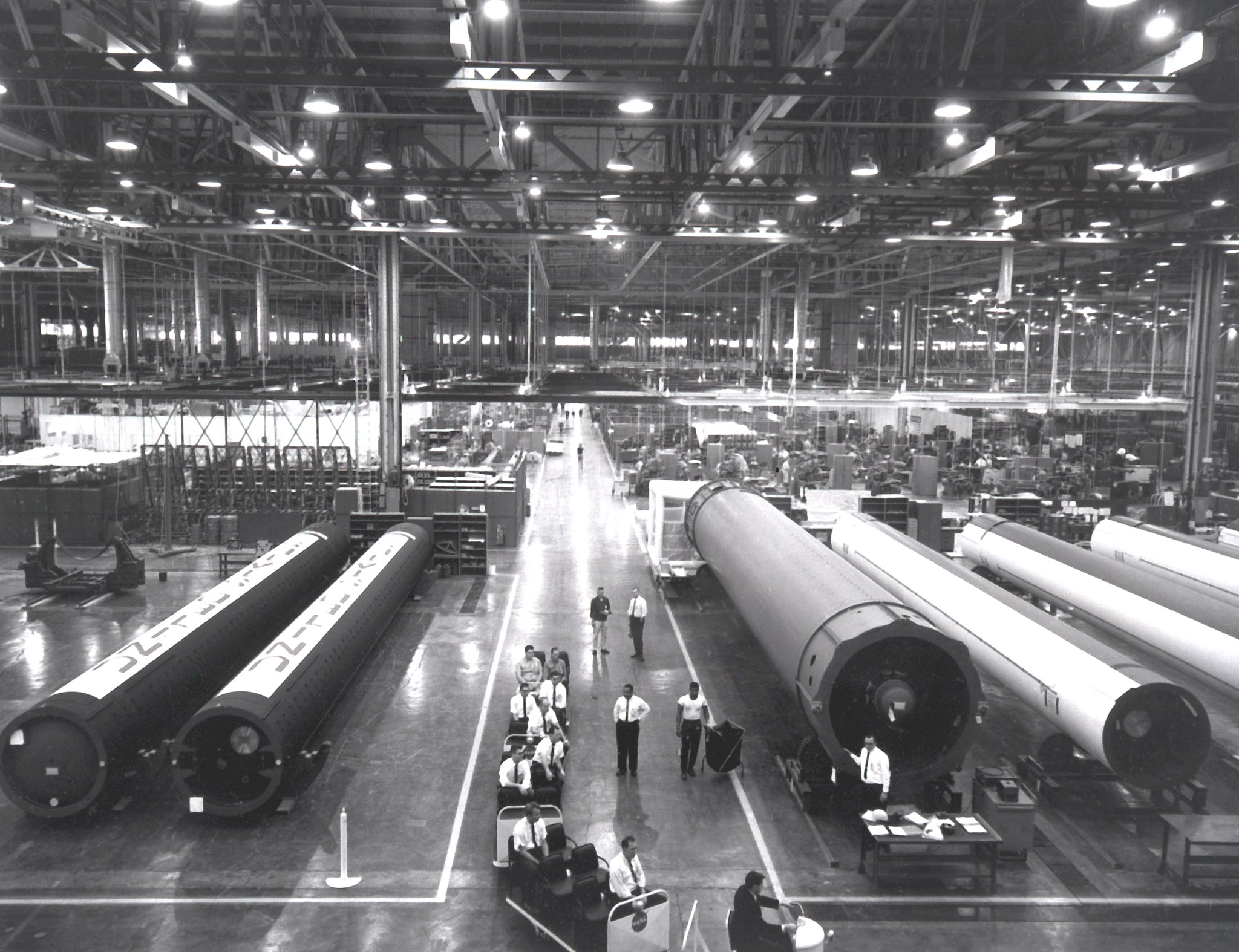
This week in 1961, Michoud Assembly Facility was selected as the production site for Saturn rockets. Here, in one of the initial assembly steps for the first stage of the Saturn IB rocket, Michoud workers position a “Spider Beam” to the central liquid-oxygen tank of the S-IB stage. Designed by NASA’s Marshall Space Flight Center and built by Chrysler Corp. at Michoud, the S-IB stage used eight H-1 engines to produce a combined thrust of 1.6 million pounds. Today, NASA’s Space Launch System rockets and Orion spacecraft for the first three Artemis missions are being built at Michoud. The NASA History Program is responsible for generating, disseminating and preserving NASA’s remarkable history and providing a comprehensive understanding of the institutional, cultural, social, political, economic, technological and scientific aspects of NASA’s activities in aeronautics and space. For more pictures like this one and to connect to NASA’s history, visit the Marshall History Program’s webpage. (NASA)


























